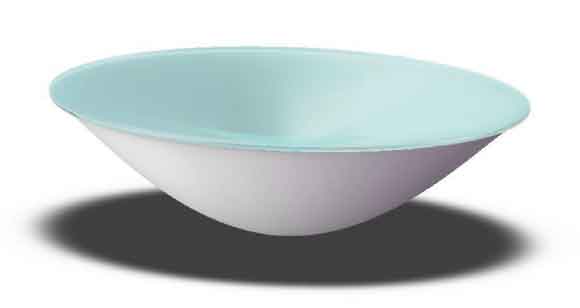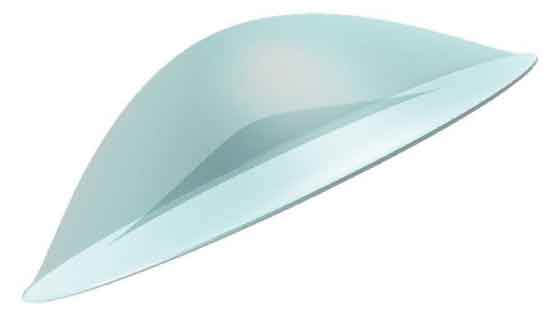Background
 Solar concentrators are relatively compact optical components that concentrate sunlight to heat a working fluid or to generate electricity from photovoltaic cells at higher efficiencies than is possible from unconcentrated sunlight. In the case of working fluids, higher efficiencies are due to the higher working temperatures realized. For photovoltaic applications, concentrators can greatly economize on the use of expensive photovoltaic cell materials.
Solar concentrators are relatively compact optical components that concentrate sunlight to heat a working fluid or to generate electricity from photovoltaic cells at higher efficiencies than is possible from unconcentrated sunlight. In the case of working fluids, higher efficiencies are due to the higher working temperatures realized. For photovoltaic applications, concentrators can greatly economize on the use of expensive photovoltaic cell materials.
A common solar concentrator design employs a refractive material that admits light on one surface and a combination of internal reflections to concentrate and focus the light on a small spot on another surface using a Cassegrain-type optical pathway. The efficiency of such a system is limited, however, by unavoidable optical aberrations. Minimizing such aberrations with an aplanatic concentrator design is necessary for achieving the thermodynamic limits of concentrator efficiency. Dielectric layers or other special materials facilitate the most compact concentrator designs, but conventional design methods (based on rotations of 2-dimensional mathematical solutions for correcting optical aberrations) are very difficult to calculate and implement due to the complex shapes of the resulting surfaces and the requirements of compact designs.
Description
 Researchers at the University of California, Merced have invented an aplanatic concentrator design with surface geometries arranged according to a novel three-dimensional mathematical solution for minimizing aberrations. The UC Merced design can reach the thermodynamic limits of efficiency with reasonably wide acceptance angles (about 2° or greater) and high concentration levels (greater than 1,000).
Researchers at the University of California, Merced have invented an aplanatic concentrator design with surface geometries arranged according to a novel three-dimensional mathematical solution for minimizing aberrations. The UC Merced design can reach the thermodynamic limits of efficiency with reasonably wide acceptance angles (about 2° or greater) and high concentration levels (greater than 1,000).
Applications
This invention may be used in any application requiring a highly efficient light concentration, especially in applications involving solar energy.
Advantages
These aplanatic concentrator designs are relatively easy to calculate and implement when compared to other high-efficiency concentrator designs, and can be made exceptionally compact due to the three-dimensional mathematical optimization used.

